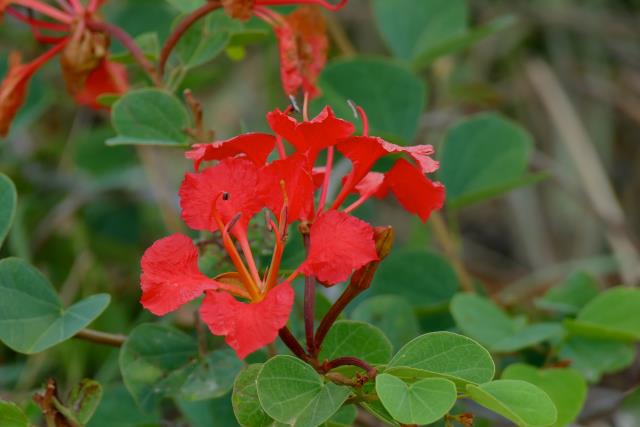By Beatrice Hawkins
A while ago I was asked to suggest a quick growing tree for a local lady. While I don’t purport to be an expert and suggested she should consult someone who is, I did suggest the ‘racehorse tree’. There is one growing in a garden near where I live and I love the look of it. There is also a jacaranda within a few metres and the combination when they are both in flower is a great sight.
At Goondiwindi recently I was delighted to see an avenue of them in full glorious yellow blossom down a property drive. Further through the town I saw a number used as street trees providing wonderful shade. They do like sandy well drained soil to grow well.
Another one that I also think about is the paulownia or Chinese dowry tree. Beautiful flowers, nutritious, high protein leaves for stock feed if needed and prized as furniture timber.
The idea behind the common name is that if planted when the baby girl is born, there is enough timber in the tree to make her dowry, all the furniture needed for her house, when she is of marriageable age. The scientific name is Paulownia tomentosa and they have many common names, among them the Empress tree, Princess tree and foxglove tree. This last one for the shape of the flowers.
The flowers come in a range of shades from creamy white to pale pink and mauve through to an almost jacaranda blue.
The trees can grow as much as 6 metres in the first year given ideal conditions but a more realistic expectation would be 3 metres, and can be ready to harvest as logs in 5 years. They form a beautiful spreading tree given the room or if planted closely will tend to go straight up with fewer branches. They can be propagated from seed or from root or stem cuttings. To my mind the ease of striking cuttings is a distinct disadvantage of an otherwise wonderful tree. If the roots are cut by a plough or by digging in the area a sucker can come up and they can become invasive as a result. However, I know of some that are large and beautiful in horse paddocks around Moonbi in NSW that have been there for many years and provide wonderful shade with their extremely large leaves and not a sucker in sight. I also know of a splendid specimen in Allora. All of these have the pale mauve/pink flowers. The most vibrant colour I have seen is on the highway through Wellington in NSW so you can see that they are a very adaptable to climate and soil type. They do however like a summer rainfall or watering well at this time.
During my Christmas break I saw many beautiful trees as I drove around. Grey green weeping myalls, a long-time favourite, beautiful Moreton Bay ash with their black tessellated bark to about 3 metres then pure cream trunks reaching straight up, wilgas, trimmed level at the height the sheep could reach, grey box with their leaves sparkling in the sun, brigalow and of course coolibah. I rested “under the shade of a Coolibah tree” in good Aussie style! I even had the pleasure of smelling the distinctive odour of gidgee before rain.
I saw another one whose name I had difficulty in recalling as it had been many years since I’d seen them growing in paddocks. I finally remembered and then had trouble finding information as Google only seemed to know the imported variety, bauhinia x blakeana, the colourful flowering trees that are planted very effectively as street trees in St George. Those trees are native to China and India and are also known as the orchid tree and come in a range of colours from white through pink to a very deep purple/pink and are extremely decorative. They were not the native variety I was looking for.
With the help of some lovely ladies in the Roma Tourist Information Office, who had a book of local trees, I was finally able to identify it as the native red bauhinia, lysiphyllum carronii. They are known by a number of common names. Queensland ebony, bean tree, pegunny and carron’s bauhinia are just a few alternatives.
The tubular flowers are very attractive to native birds and, as the name would suggest, are red. The seed pods, or fruit, are green or red turning brown as they ripen. They are about 10 cm long and 4.5 wide with bulges around the seeds. The trees are often planted in parks and gardens in the western area of our state. They are quite a large spreading evergreen, or briefly deciduous if the season turns dry, tree. They flower from October to early December. It is part of the legume family along with brigalow and grows in similar country. It is also used in mine site rehabilitation in these areas. This bauhinia is native to Australia and they are good fodder trees as the leaves and seed pods are eaten by livestock… very handy to have in dry times!
*This is an old article that has been digitised so our readers have access to our full catalogue.







